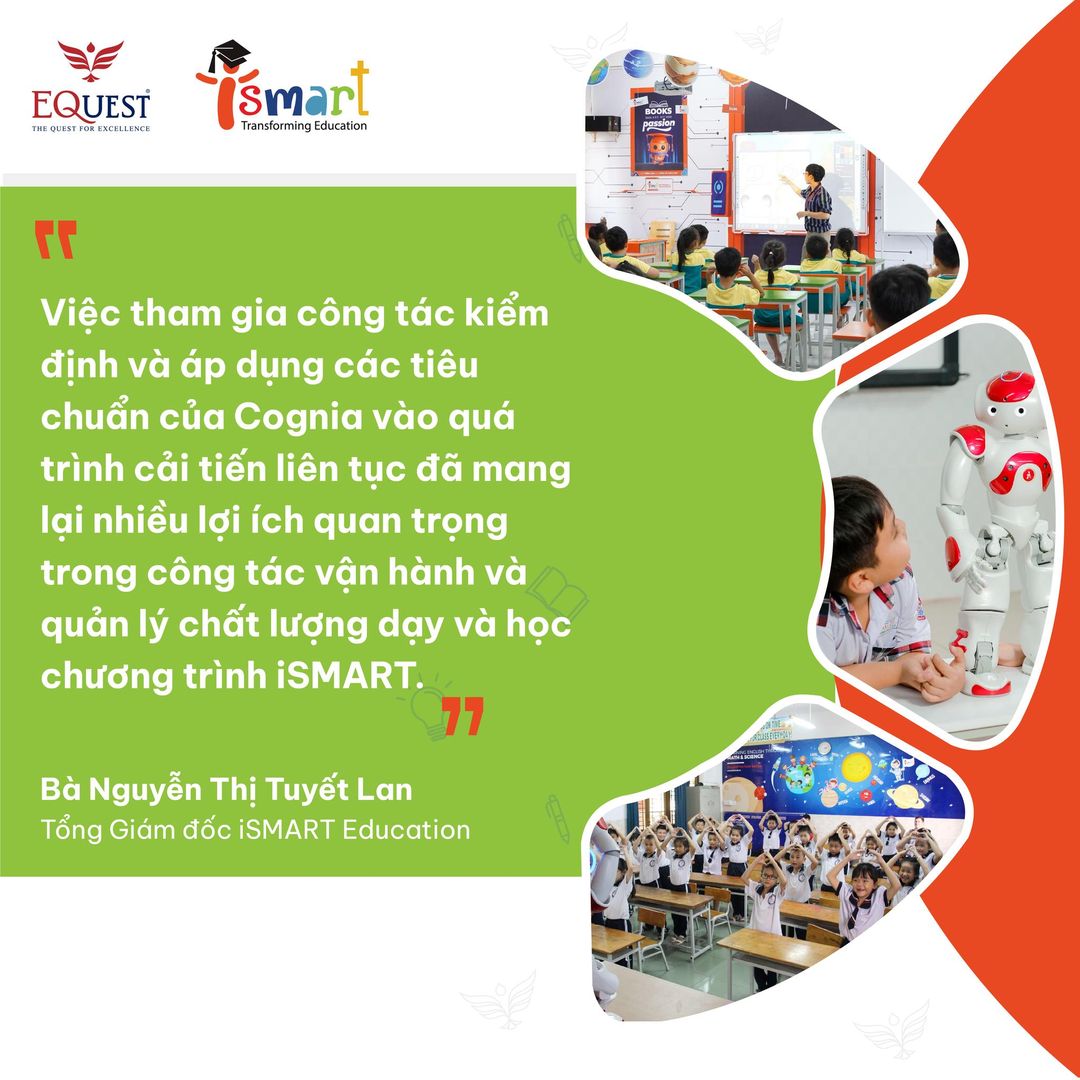Pioneering in implementing the English teaching program through Math and Science, iSMART Education has made many contributions to the development and positive impact on students’ English learning through their subjects.
So what benefits do learning English through subjects bring to students? And what specific benefits have the involvement in the continuous assessment and improvement process brought to iSMART Education?
a. Benefits of learning English through subject context
- Enhance language skills through Math and Science: Integrating English learning into subjects like Math and Science offers numerous advantages. Students can learn English alongside their favorite subjects. This helps students connect language to other subjects, creating real-world contexts for learning and developing thinking and problem-solving skills.
- Boost learning passion and comprehensive understanding: Learning English through subject context allows students to grasp the subject more holistically. This encourages students to engage in discussions, ask questions, and participate more actively in class.
- Build confidence in speaking and writing English: Learning English through subject context not only improves language skills but also builds confidence in using English. Participating in discussions, presenting ideas, and writing reports in English helps students become more comfortable using the language.
- Apply English to real-life situations: Students can use English to solve real-world problems, engage in discussions, and express their thoughts on complex scientific concepts.
b. Challenges in teaching and learning English through subjects
Teaching and learning English through subjects also present some challenges, such as:
- Limited English learning time as students must dedicate most of their time to other subjects.
- Lack of background knowledge in Math and Science makes it harder to absorb complex English vocabulary and concepts.
- Insufficient English foundation.
- Lack of interest and enthusiasm from students.
c. Overcoming the challenges
To overcome these challenges, teachers can:
- Implement Content and Language Integrated Learning (CLIL) methodologies.
- Build vocabulary through activities and authentic materials.
- Use vetted materials to help students access language and subject content.
- Encourage collaborative learning among students.
- Integrate technology to reinforce learning and create engaging learning experiences for students.
d. The importance of accreditation and continuous improvement for the iSMART program
“Participation in the Accreditation process and application of Cognia standards to the continuous improvement process have brought significant benefits to the operation and management of the quality of teaching and learning in the iSMART program”, said Ms. Nguyen Thi Tuyet Lan, CEO of iSMART Education.
So, what specific benefits has participation in the assessment and continuous improvement process brought to iSMART Education?
- Student-centered quality management: This focuses on creating benefits and encouraging student development, fostering a learner-centered environment where students demonstrate active engagement, self-determination, and self-confidence.
- Promotes the habit of collecting and using data evidence in management, control, and decision-making by the Board of Directors: This approach not only helps iSMART Education develop more effective strategies based on specific and accurate data but also supports in predicting and analyzing future trends. Thereby, iSMART can optimize its performance and efficiency while minimizing potential risks. Data use also creates transparency and accountability, helping to increase trust from parents and students. In addition, through data analysis, iSMART Education can develop products and services that meet market needs and optimize operating costs.
- Participation in the assessment and continuous improvement process helps iSMART Education gradually synchronize the program quality management process and the quality assessment of teaching and learning in the regions, creating an opportunity to promote development: By constantly reviewing and improving existing methods, tools, and processes, iSMART Education can achieve two important goals: standardizing education quality and enhancing equity. At the same time, this opens the door to innovation in the assessment process. Additionally, this unification creates opportunities for collaboration between branches and contributes to improving the quality of iSMART Education nationwide.

